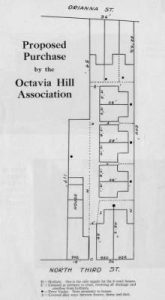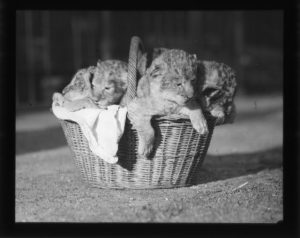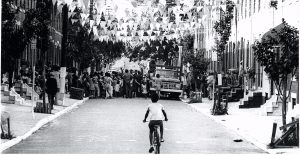 Established in 1974, the National History Day competition is a year-long educational program that attracts thousands of middle and high school students and educators nationwide. Students compete at the local and state levels, which award participants the opportunity to present their work in a national contest held every June at the University of Maryland, College Park. Since 2006, the Special Collections Research Center has participated in NHD and has hosted classes from numerous Philadelphia area schools, including the Julia R. Masterman Laboratory and Demonstration School.
Established in 1974, the National History Day competition is a year-long educational program that attracts thousands of middle and high school students and educators nationwide. Students compete at the local and state levels, which award participants the opportunity to present their work in a national contest held every June at the University of Maryland, College Park. Since 2006, the Special Collections Research Center has participated in NHD and has hosted classes from numerous Philadelphia area schools, including the Julia R. Masterman Laboratory and Demonstration School.
In preparation for the 2017 NHD competition, Masterman High School students Abigail Leighton, Eva Faenza, and Madeline Kim visited the SCRC to use the original news clipping and photograph files of the Philadelphia Evening Bulletin and Philadelphia Inquirer newspapers for information to include in their group documentary, “The Selma Marches: Two Steps Forward One Step Back for Voting Rights.” Their project placed second in the Senior Division, Group Documentary category at the Pennsylvania state NHD competition.
 Abigail Leighton describes the class visits to the SCRC as “…instrumental in the creation of our film. The sources we studied not only helped us develop our knowledge of the Selma Marches, they also provided us with visuals such as headlines that articulated key points that we made in our documentary. The insights we developed from the articles we discovered at the SCRC helped propel our documentary from the NHD Philly competition at the National Constitution Center, to the NHD national competition at the University of Maryland. “
Abigail Leighton describes the class visits to the SCRC as “…instrumental in the creation of our film. The sources we studied not only helped us develop our knowledge of the Selma Marches, they also provided us with visuals such as headlines that articulated key points that we made in our documentary. The insights we developed from the articles we discovered at the SCRC helped propel our documentary from the NHD Philly competition at the National Constitution Center, to the NHD national competition at the University of Maryland. “
“We visited the SCRC very early on in our research. Because of this, the sources we found there provided a framework for our project. We worked with over twenty articles from the Philadelphia Evening Bulletin Clipping Collection. Primarily, these articles helped us place the Selma Marches in historical context, a crucial part of the National History Day process. They were like puzzle pieces. Each article told the story of a different day leading up to the three major voting rights marches. When we pieced the puzzle together, we were able to understand the motivation behind the movement. The articles also helped us interpret the immediate national impact of the marches. We read about protests sparked by the violence in Selma in major cities across the nation. Although throughout this year we consulted many primary sources from speeches to letters to footage and pictures and even conducted a primary source interview with James H. Barker, photographer of the third Selma March, the most instrumental sources were those first articles that we read at the SCRC.”
To view the documentary go to: https://www.youtube.com/watch?v=MVq-uhXiguc
 For more information about NHD, activities and programs in the Philadelphia area visit the NHD Philly website. New groups of students are working on their projects for 2018 and beyond.
For more information about NHD, activities and programs in the Philadelphia area visit the NHD Philly website. New groups of students are working on their projects for 2018 and beyond.
Brenda Galloway-Wright, Associate Archivist, SCRC




























